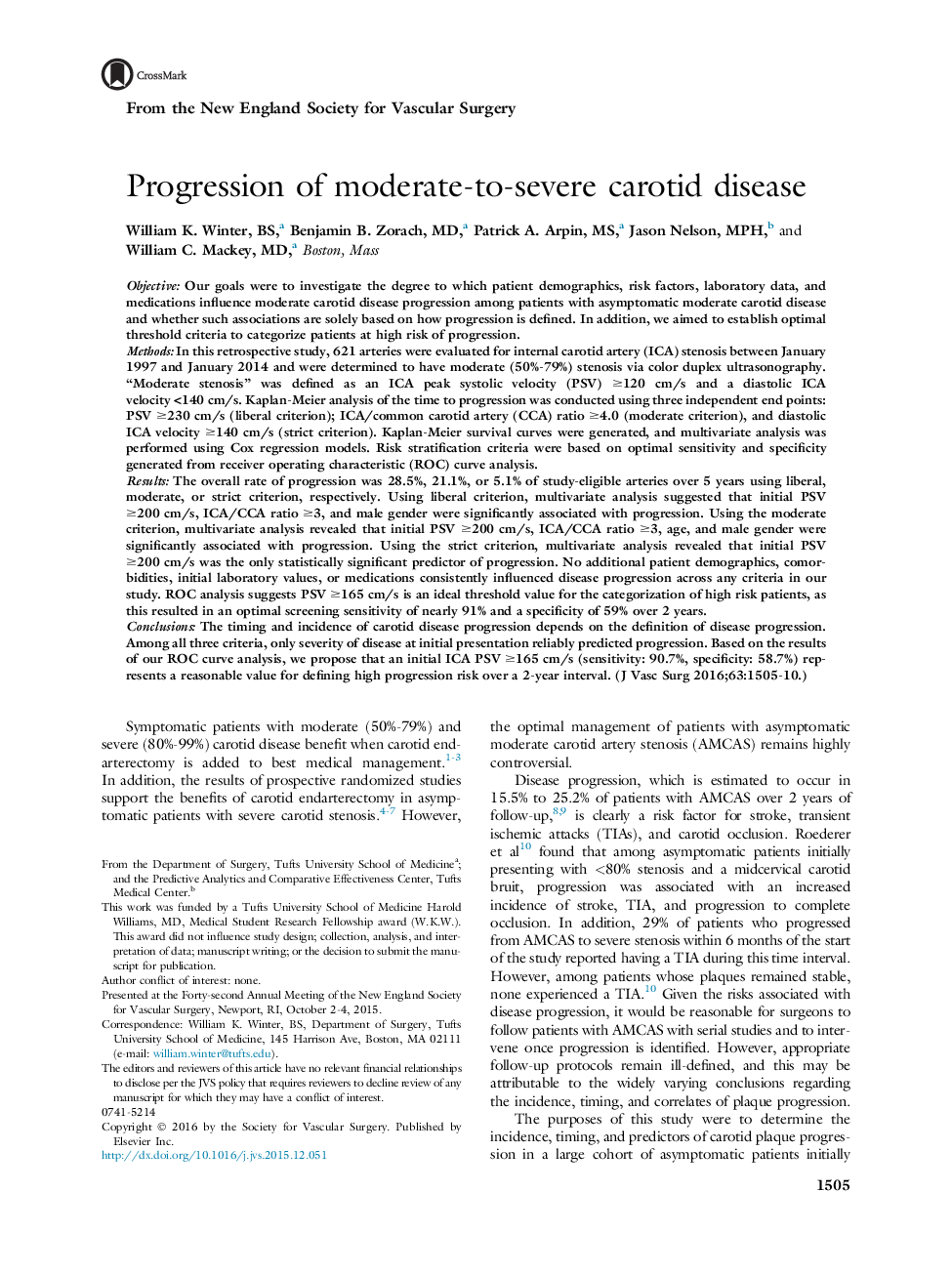| کد مقاله | کد نشریه | سال انتشار | مقاله انگلیسی | نسخه تمام متن |
|---|---|---|---|---|
| 2987455 | 1179803 | 2016 | 6 صفحه PDF | دانلود رایگان |
ObjectiveOur goals were to investigate the degree to which patient demographics, risk factors, laboratory data, and medications influence moderate carotid disease progression among patients with asymptomatic moderate carotid disease and whether such associations are solely based on how progression is defined. In addition, we aimed to establish optimal threshold criteria to categorize patients at high risk of progression.MethodsIn this retrospective study, 621 arteries were evaluated for internal carotid artery (ICA) stenosis between January 1997 and January 2014 and were determined to have moderate (50%-79%) stenosis via color duplex ultrasonography. “Moderate stenosis” was defined as an ICA peak systolic velocity (PSV) ≥120 cm/s and a diastolic ICA velocity <140 cm/s. Kaplan-Meier analysis of the time to progression was conducted using three independent end points: PSV ≥230 cm/s (liberal criterion); ICA/common carotid artery (CCA) ratio ≥4.0 (moderate criterion), and diastolic ICA velocity ≥140 cm/s (strict criterion). Kaplan-Meier survival curves were generated, and multivariate analysis was performed using Cox regression models. Risk stratification criteria were based on optimal sensitivity and specificity generated from receiver operating characteristic (ROC) curve analysis.ResultsThe overall rate of progression was 28.5%, 21.1%, or 5.1% of study-eligible arteries over 5 years using liberal, moderate, or strict criterion, respectively. Using liberal criterion, multivariate analysis suggested that initial PSV ≥200 cm/s, ICA/CCA ratio ≥3, and male gender were significantly associated with progression. Using the moderate criterion, multivariate analysis revealed that initial PSV ≥200 cm/s, ICA/CCA ratio ≥3, age, and male gender were significantly associated with progression. Using the strict criterion, multivariate analysis revealed that initial PSV ≥200 cm/s was the only statistically significant predictor of progression. No additional patient demographics, comorbidities, initial laboratory values, or medications consistently influenced disease progression across any criteria in our study. ROC analysis suggests PSV ≥165 cm/s is an ideal threshold value for the categorization of high risk patients, as this resulted in an optimal screening sensitivity of nearly 91% and a specificity of 59% over 2 years.ConclusionsThe timing and incidence of carotid disease progression depends on the definition of disease progression. Among all three criteria, only severity of disease at initial presentation reliably predicted progression. Based on the results of our ROC curve analysis, we propose that an initial ICA PSV ≥165 cm/s (sensitivity: 90.7%, specificity: 58.7%) represents a reasonable value for defining high progression risk over a 2-year interval.
Journal: Journal of Vascular Surgery - Volume 63, Issue 6, June 2016, Pages 1505–1510
